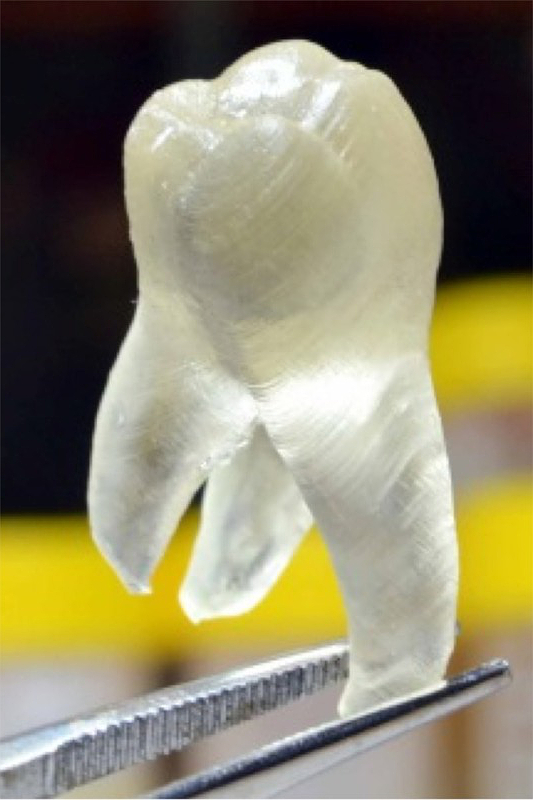3D-printed teeth take bite at bacteria
 The next wave of prosthetic teeth could be churned out of a 3D-printer.
The next wave of prosthetic teeth could be churned out of a 3D-printer.
Getting fitted for false teeth and other dental treatment currently requires a mouthful of odd-tasting gunk and plaster casts, but new research could lead dentists to high-tech digital scanning and 3D printing instead.
The advanced techniques could allow advanced materials to be used for the first time, to make new dentures that even improve oral hygiene.
Bio-engineer Andreas Herrmann from Denmark’s University of Groningen is the leader of a team working on an antimicrobial plastic for 3D-printed teeth that kill bacteria.
It is a novel way to deal with an important issue of bacterial damage to existing implants, which costs patients around the world millions of dollars.
It could have deeper ramifications too, with a high percentage of heart problems and other bacterial conditions caused by poor oral hygiene.
The team is working with antimicrobial quaternary ammonium salts embedded in existing dental resin polymers.
The positively-charged salts disrupt negatively-charged bacterial membranes, causing them to rupture and die.
“The material can kill bacteria on contact, but on the other hand it’s not harmful to human cells,” Hermann says.
They created a medium for use in a 3D-printer, hardened it with ultraviolet light and used it to print a range of dental objects including replacement teeth and orthodontic braces.
They then tested its antimicrobial properties by coating samples in mix of saliva and Streptococcus mutans, a key bacterium behind tooth decay.
The material appeared to kill over 99 per cent of the bacteria, while a control sample without the added salts only managed to get rid of 1 per cent.
The team left the samples in the saliva and bacteria mix for six days, and say that further tests will be needed before the technology is ready for human use.
“For clinical used we need to extend this, and investigate the compatibility with toothpaste,” Herrmann said.
They will also have to study the strength of the plastic, though the team does now think it will take too long.
“It’s a medical product with a foreseeable application in the near future, much less time than developing a new drug.”
More details are available in their latest report, published in the journal Advanced Functional Materials.








 Print
Print